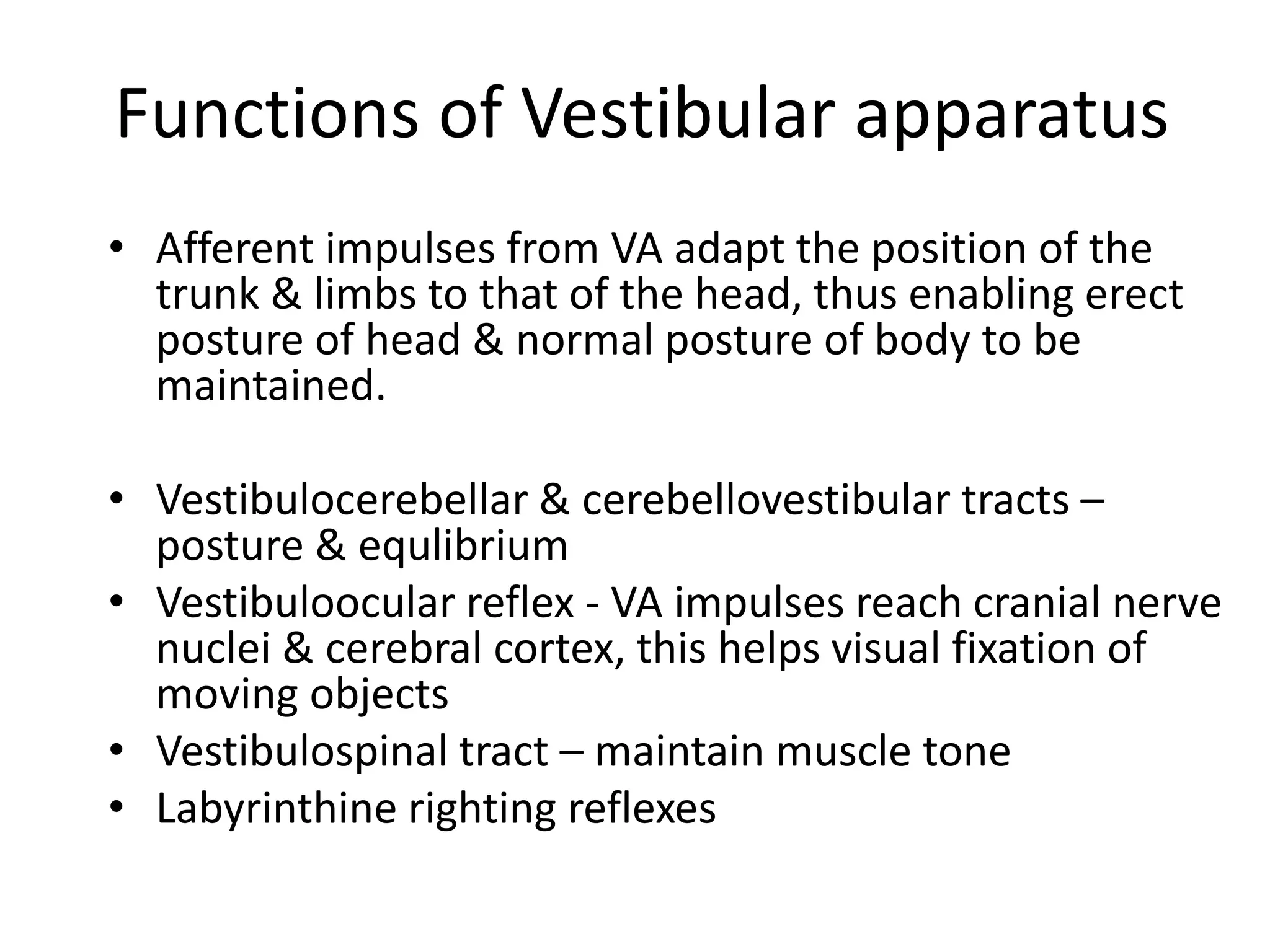The vestibular apparatus contains the organs that sense equilibrium - the utricle, saccule, and three semicircular canals. Hair cells within these organs detect linear and angular acceleration. When stimulated, hair cells trigger nerve impulses that travel to the brainstem and cerebellum to maintain posture and balance. Disorders like vertigo, motion sickness, and Meniere's disease can disturb equilibrium by affecting the vestibular apparatus.







































